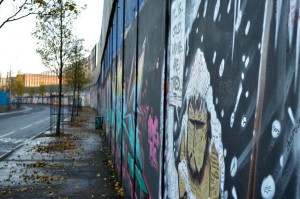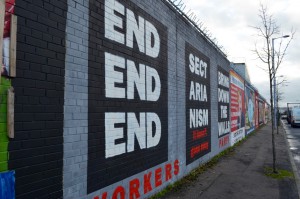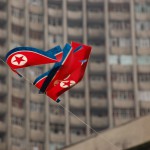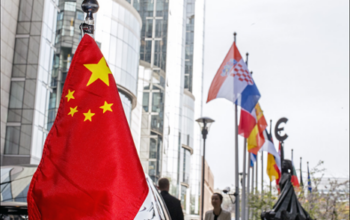The year of 2016 marks the centenary of the Easter Rising that took place in Dublin, Ireland. It was an uprising against the British rule and one of the decisive steps undertaken by Irish people in the struggle for independence of Ireland from the United Kingdom. After several days of fighting, the rebellion was suppressed by the British resulting in hundreds of causalities among civilians and the execution of sixteen Irish rebel leaders. However, the Irish never gave up, and only six years later, in 1922, they eventually won what they were fighting for as an outcome of the Irish War of Independence. Yet, they lost some part of the territory, namely six counties in the northeast of the island that today constitute Northern Ireland. That is how the partition of Ireland occurred and the island got divided into the Irish Free State, which became the Republic of Ireland in 1937, and Northern Ireland that opted to remain a part of the United Kingdom.

This year a series of events to commemorate those who fought a hundred years ago were held in the Irish capital of Dublin at the end of March. Although, the rebellion of 1916 took place between the 24th and 29th of April, the centenary was celebrated almost a month earlier due to the fact that the event itself is connected with Easter. As this holiday is a moveable feast, this year’s Easter Sunday and the climax of celebration fell on the 27th of March.
Initially, the Irish government wanted to invite the British royals to Dublin to participate in the state commemorations, however, later it was announced that the event was a moment of national commemoration and no foreign representatives would be invited.
In general, the British royals are not frequent visitors to Ireland. In fact, the first official visit ever of the Queen of the United Kingdom to the Republic of Ireland only took place in 2011. Then, in 2015, Prince Charles also went to Ireland for the first time officially. During his time there he had a meeting with the leader of the republican political party Sinn Féin Gerry Adams. The two events signify a definite improvement of relations between these two neighbouring countries that share a long contradictory history of hostilities and wars. Nevertheless, during the last few years, Ireland and the United Kingdom have been getting more intertwined in various sectors. They now have close ties when it comes to politics and economy, which proves that the relations between the Irish and the British have become better. But what about the political situation in Northern Ireland now?
Throughout the 20th century, especially after the 1960s, the territory of Northern Ireland was a rather troublesome place. The population of this country was divided into two large groups: the Catholic republicans, who supported unification of Ireland and therefore identified themselves as Irish, and the Protestant unionists, who preferred staying in the UK and considered themselves British. For more than 30 years, a period of time known as “The Troubles”, Northern Ireland was basically a warzone where these two groups were fighting against one another. For several decades, the notorious Irish Republican Army (IRA) was terrorising not only Northern Ireland but also other parts of the United Kingdom and continental Europe. The Good Friday Agreement of 1998 helped improve the situation. Once it was signed, the Republic of Ireland stopped claiming Northern Ireland under its constitution, which decreased the violence in the country.
Even though, the conflict seems to be over now, there are still some things that serve as a reminder of those eerie past events. Among them are the political murals, which are propaganda paintings, and a series of barriers, called “Peace Walls” in Northern Ireland that were built in the cities of Belfast, Derry, Portadown, and elsewhere in the 1970s for the purpose of segregating Catholics and Protestants and minimising the violence between these two groups. Although, the walls were supposed to be temporary constructions, they are still standing today. In fact, they were even consolidated after the peaceful Good Friday Agreement in 1998. And nowadays, the walls as well as the political murals are among the hotspots for tourists who visit Belfast in order to get a grasp of the history of the Troubles in Northern Ireland.
 A couple of years ago, the future of the walls was determined. The government of Northern Ireland decided that by 2023, Peace Walls should be removed. However, not everyone is sure that tearing down the walls is a good idea. Many people in the country are concerned about it. In their opinion, taking down the walls could be a reckless decision since the residents themselves requested them to be erected before.
A couple of years ago, the future of the walls was determined. The government of Northern Ireland decided that by 2023, Peace Walls should be removed. However, not everyone is sure that tearing down the walls is a good idea. Many people in the country are concerned about it. In their opinion, taking down the walls could be a reckless decision since the residents themselves requested them to be erected before.
Even though the war is a relic of the past, the political situation in Northern Ireland is still rather fragile. News about clashes of the extremists with the police, or blast bombs being detonated around the country by the IRA members emerge occasionally. Therefore, people still prefer the walls to be there and separate Catholic and Protestant neighbourhoods.
Since this year is quite important for the Republic of Ireland, many security concerns arise. The police are concerned about new waves of violence by extremist groups that might spill out to the country from its northern neighbour. Currently the police in both the Republic of Ireland and Northern Ireland are on alert.
The ongoing debate on whether the UK should exit the EU also aggravates the political instability. The above mentioned party of Sinn Féin, whose primary goal is to bring about a united Ireland, appeals to the British government to hold a border call in the event of Brexit. The officials in the United Kingdom announced that they had no interest in keeping Northern Ireland within the Union. The question of whether Irelands should be unified is up to the people to decide. According to a poll held in 2014, a strong majority in Northern Ireland were in favour of the referendum, but still preferred staying in the UK.
However, since the situation in Northern Ireland is still quite unstable and people do not seem completely ready to let go of the past, it is difficult to predict what to expect in case Northern Ireland exists the UK. The risk of new murderous riots resuming in the country is quite high. Thus, for now it is probably better to maintain the status quo and not to undertake any assertive action.
By Evgenia Isaeva
Image Credit: Evgenia Isaeva










